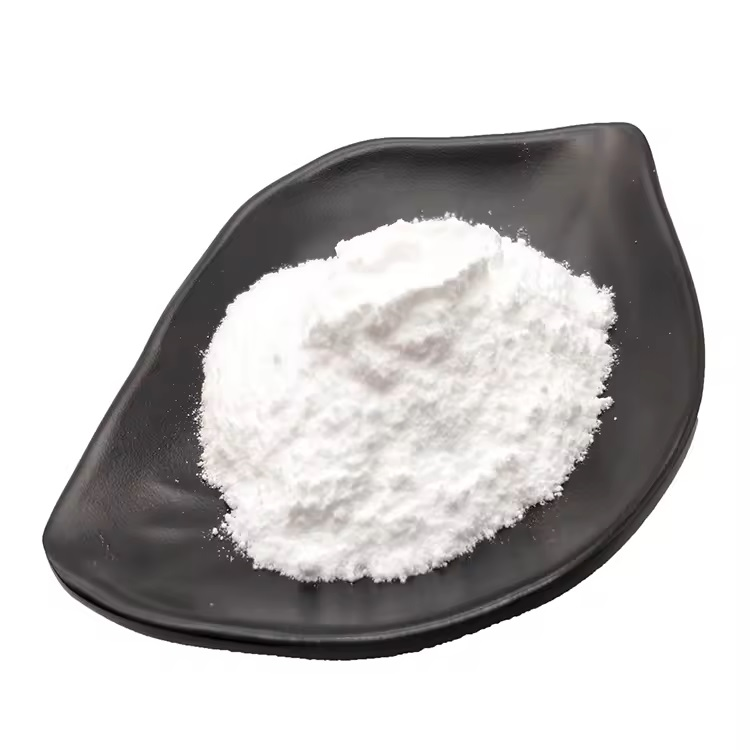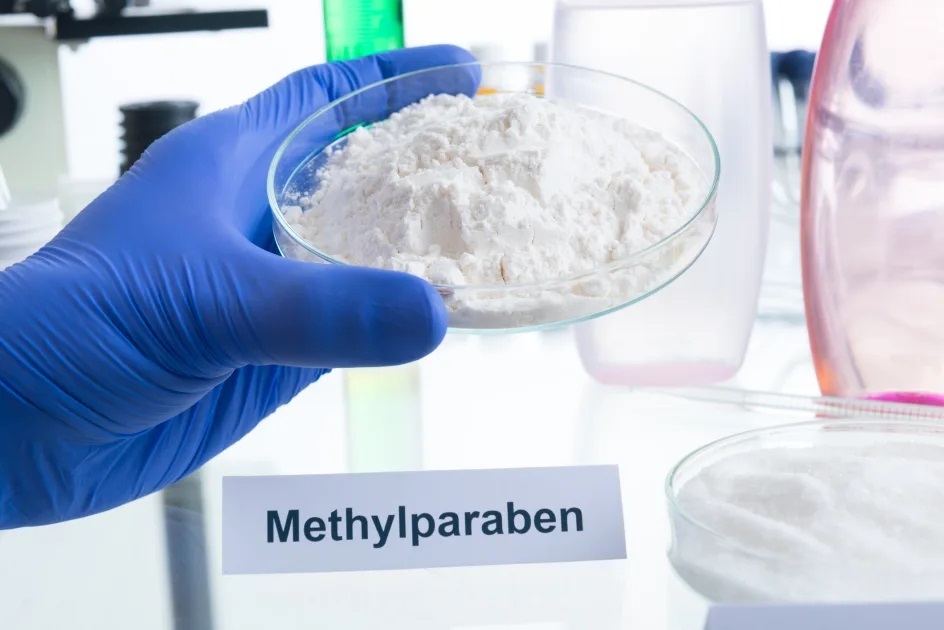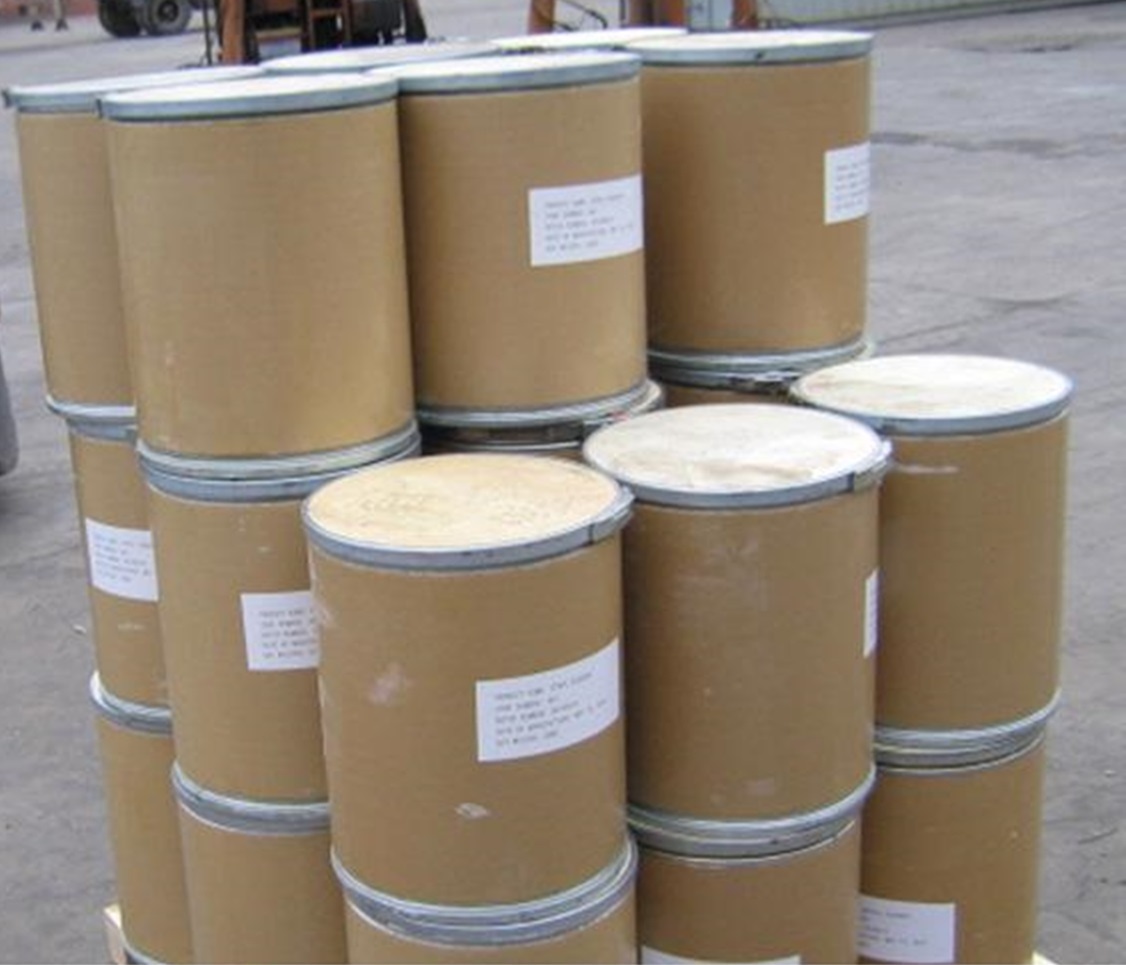We unleash your business potential by maximize the business innovation.
Send EmailMethyl Paraben, Methylparaben, Abiol, Septos, Moldex, Metaben, Paridol, Solbrol, Nipagin, Metoxyde, Maseptol, Methaben, 99-76-3
⚙️ Technical Properties of Sodium Methylparaben
| Property | Specification |
|---|---|
| Chemical Name | Sodium 4-(methoxycarbonyl)phenolate |
| CAS Number | 5026-62-0 |
| Molecular Formula | C₈H₇NaO₃ |
| Molecular Weight | ~174.13 g/mol |
| Appearance | White crystalline powder |
| Odor | Odorless or faint characteristic odor |
| Solubility | Highly soluble in water |
| pH (1% solution) | 9.5 – 10.5 |
| Purity (Assay) | 99 – 102% (anhydrous basis) |
| Moisture Content | Max. 5.0% |
| Melting Point | ~125–128°C (for methylparaben before neutralization) |
| Preservative Range | 0.1 – 0.3% in finished formulations |
| EINECS Number | 225-714-1 |
| Function | Broad-spectrum antimicrobial preservative |
🧴 Application Notes
-
Effective against bacteria, yeast, and mold in water-based formulations.
-
Commonly used in leave-on and rinse-off cosmetic products.
-
Often combined with other preservatives like phenoxyethanol for broader protection.
-
Stable across a wide pH range, making it versatile in formulations.
🏭 Sectoral Compliance Table for Sodium Methylparaben
|
Cosmetics |
Shampoos, creams, lotions, makeup products | ✅ Highly Suitable | Widely used; effective at low concentrations |
| Personal Care | Wet wipes, shaving products, toothpaste | ✅ Highly Suitable | Provides antimicrobial protection |
| Pharmaceuticals | Topical ointments, gels, liquid medications | ✅ Highly Suitable | Requires pharmaceutical-grade purity |
| Food Industry | Preservative (E218) in select food items | ⚠️ Limited Suitability | Approved only in specific doses and products |
| Veterinary Products | Animal care creams and topical solutions | ✅ Suitable | Used for microbial stability |
| Household Cleaners | Liquid soaps, surface cleaners | ✅ Suitable | Helps maintain formula stability |
| Industrial Products | Paints, adhesives, textile auxiliaries | ⚠️ Limited Suitability | Often used with alternative preservatives |
📌 Legend:
-
✅ Highly Suitable: Safe, effective, and widely accepted under regulations.
-
⚠️ Limited Suitability: Use is restricted; dosage and product type must be carefully controlled.
Methyl 4-hydroxybenzoate
CAS: 99-76-3
Molecular Formula: C8H8O3
Names and Identifiers
| Name | Methyl 4-hydroxybenzoate |
| Synonyms | Abiol Septos Moldex Metaben Paridol Solbrol NIPAGIN Nipagin Metoxyde Maseptol Methaben NSC 3827 Solbrol M AI3-01336 Methylben HSDB 1184 Nipagin M Preserval Tegosept M CCRIS 3946 Aseptoform BRN 0509801 Preserval M Methyl butex NIPAGIN PLAIN Methylparaben FEMA No. 2710 Methyl paraben Methyl parasept FEMA Number 2710 METHYLPARABEN,NF Methyl chemosept METHYLPARABEN,FCC RARECHEM AL BF 0098 p-Carbomethoxyphenol Methyl p-oxybenzoate Methyl Hydroxybenzoate p-Methoxycarbonylphenol Methyl-4-hydroxybenzoate Methyl 4-hydroxybenzoate 4-HYDROXYLMETHYLBENZOATE Methyl-p-hydroxybenzoate Methyl p-hydroxybenzoate 4-(Methoxycarbonyl)phenol Methyl parahydroxybenzoate 4-hydroxy-2-methylbenzoate p-Oxybenzoesauremethylester p-Hydroxybenzoic acid methyl ester EPA Pesticide Chemical Code 061201 P-HYDROXYBENZOIC ACID METHYL ESTER 4-Hydroxybenzoic acid methyl ester 4-Hydroxybenzoic acid, methyl ester Methyl ester of p-hydroxybenzoic acid Benzoic acid, p-hydroxy-, methyl ester Benzoic acid, 4-hydroxy-, methyl ester Methylester kyseliny p-hydroxybenzoove 4-10-00-00360 (Beilstein Handbook Reference) 4-HYDROXYBENZOICACIDMETHYLESTER(METHYLPARABEN) |
| CAS | 99-76-3 |
| EINECS | 202-785-7 |
| InChI | InChI=1/C8H8O3/c1-5-4-6(9)2-3-7(5)8(10)11/h2-4,9H,1H3,(H,10,11)/p-1 |
| InChIKey | LXCFILQKKLGQFO-UHFFFAOYSA-N |
Physico-chemical Properties
| Molecular Formula | C8H8O3 |
| Molar Mass | 152.15 |
| Density | 1,46g/cm |
| Melting Point | 125-128 °C (lit.) |
| Boling Point | 298.6 °C |
| Flash Point | 280°C |
| Water Solubility | Slightly soluble in water. |
| Solubility | Slightly soluble in water, easily soluble in ethanol, ether, acetone and other organic solvents. |
| Vapor Presure | 0.000005 hPa (20 °C) |
| Appearance | White needle crystal |
| Color | White to almost white |
| Merck | 14,6107 |
| BRN | 509801 |
| pKa | pKa 8.15(H2O,t =20.0) (Uncertain) |
| PH | 5.8 (H2O, 20°C) (saturated solution) |
| Storage Condition | room temp |
| Stability | Stable. Incompatible with strong oxidizing agents, strong bases. |
| Sensitive | Easily absorbing moisture |
| Refractive Index | 1.4447 (estimate) |
| MDL | MFCD00002352 |
| Physical and Chemical Properties | Properties: White needle-like crystals or colorless crystals slightly soluble in water, soluble in ethanol, ether, acetone and other organic solvents |
| Use | Used as food, cosmetics and pharmaceutical mildewproofing agent |
Risk and Safety
| Risk Codes | R36/37/38 - Irritating to eyes, respiratory system and skin. R20/21/22 - Harmful by inhalation, in contact with skin and if swallowed. R36 - Irritating to the eyes |
| Safety Description | S26 - In case of contact with eyes, rinse immediately with plenty of water and seek medical advice. S36 - Wear suitable protective clothing. S24/25 - Avoid contact with skin and eyes. S39 - Wear eye / face protection. |
| UN IDs | UN 2769 |
| WGK Germany | 1 |
| RTECS | DH2450000 |
| TSCA | Yes |
| HS Code | 29182930 |
| Toxicity | LD50 orally in Rabbit: 2100 mg/kg |
Standard
This product is methyl 4-hydroxybenzoate, from methyl alcohol and parabens. Calculated as dry, containing C8H80 3 should be 98.0% ~ 102.0%.
Trait
- This product is white or off-white crystalline or crystalline powder.
- This product is soluble in methanol, ethanol or ether, soluble in hot water, slightly soluble in water.
melting point
The melting point of this product (General 0612) is 125~128°C.
Differential diagnosis
- in the chromatogram recorded under the content determination item, the retention time of the main peak of the test solution should be consistent with the retention time of the main peak of the reference solution.
- take this product, dissolve and dilute with ethanol to make about 5 ml solution per lm l, and determine by UV-Vis spectrophotometry (General 0401), there is an absorption maximum at a wavelength of 258Nm.
- The infrared absorption spectrum of this product should be consistent with the control spectrum (Spectrum set 853).
Exam
acidity
take 2ml of the solution under the items of clarity and color, add 2m l of ethanol and 5 m l of water, shake well, add 2 drops of bromocresol green indicator solution, with sodium hydroxide titration solution (O .lm o l/L) titration to blue, consumption of sodium hydroxide titration solution (0. lm o l/L) should not pass 0. lml.
clarity and color of solution
take this product l .O g, after dissolving with 0901 of ethanol, check according to law (General rule 0902 and general rule), the solution should be clear and colorless, it shall not be deeper than the yellow or yellow-green standard colorimetric solution No. 1 (General rule 0901 method 1).
chloride
take 2.0g of this product, add 50ml of water, 80X: water bath heating for 5 minutes, let cool, filter; Take the filtrate 5.0, check according to law (General rule 0801), with standard sodium chloride solution 7. Compared with the control solution made of 0M l, it should not be more concentrated (0. 035%).
sulfate
take 25ml of filtrate under chloride item and check according to law (pass 0802). Compared with the control solution made of 2. 4ml of standard potassium sulfate solution, it should not be more concentrated (0. 024%).
Related substances
take this product, add the mobile phase to dissolve and dilute the solution containing lm g per lm l as the test solution; Take lm l with precision and put it in a 100ml measuring flask, the mobile phase was diluted to the scale, and the solution was used as a control solution. According to the chromatographic conditions under the content determination item, 20 ml of the control solution is taken and injected into the human liquid chromatograph to adjust the detection sensitivity so that the peak height of the main component peak is about 25% of the full scale; then 20 ^ 1 of the test solution and the control solution were accurately measured, and the human liquid chromatograph was injected respectively, and the chromatogram was recorded to 4 times of the retention time of the main peak. If the impurity peak is shown in the chromatogram of the test solution, the area of the single impurity peak shall not be greater than 0 of the area of the main peak of the control solution. 4 times (0 .4% ), the sum of each impurity peak area shall not be greater than 0. 8 times (0. 8%).
fermentation broth
take an appropriate amount of this product, precision weighing, add an appropriate amount of N ,N-dimethylformamide, immediately shake to dissolve and dilute to make about O per lm l. lg of the solution, as the test solution; Another precision weighing the appropriate amount of methanol, plus JV ,N-dimethylformamide dissolved and diluted to make each lm l containing methanol 0 .3M g of solution, as a control solution. 0861 dimethylpolysiloxane was used as stationary liquid as determined by residual solvent determination method (General 100% third method); The starting temperature was 40°C, and the temperature was raised to 80°C at a rate of 15°C per minute for 5 minutes, then the temperature was raised to 130°C at a rate of every minute for 1 minute, and then raised to 220°C at a rate of 40°C per minute for 3 minutes; The temperature of the injection port was 200°C; the detector temperature was 250°C. 1ul of the reference solution is injected into the gas chromatograph, and the separation degree between peaks of each component shall meet the requirements. Take 1ul of each sample solution and reference solution respectively, inject human gas chromatograph, record chromatogram, calculate by peak area according to external standard method, and should not exceed 0.3%.
loss on drying
take this product, put it in a silica gel dryer, and dry it under reduced pressure to constant weight. The weight loss shall not exceed 0831 (general rule).
ignition residue
The l .O g of this product shall be taken for inspection according to law (General rule 0841), and the remaining residue shall not exceed.
Heavy metals
The residue left under the ignition residue item shall not contain more than 20 parts per million of heavy metals as determined by law (general chapter 0821 second method).
arsenic salt
take this product l.O g, add calcium hydroxide l.O g, mix, add a small amount of water, stir evenly, after drying, first burn with small fire to charring, then burn at 500~600°C to completely Ash and cool, add hydrochloric acid 5M l and water 23ML, according to the law inspection (General Principles 0822 The first law), should comply with the provisions (0.0002%).
Content determination
measured by high performance liquid chromatography (General 0512).
- chromatographic conditions and system applicability test using eighteen alkyl silane bonded silica gel as filler; Methanol -1% glacial acetic acid (60 : 40) as mobile phase, the detection wavelength was 254mn. Weigh the appropriate amount of the reference substance of methyl hydroxybenzoate and ethyl hydroxybenzoate, add the mobile phase to dissolve and dilute to make a solution containing 10 gm/l, inject 20ul into human liquid chromatograph, record the chromatogram, the degree of separation between the methyl paraben peak and the ethyl paraben peak should meet the requirements.
- determination method: take an appropriate amount of this product, precisely weigh it, add mobile phase to dissolve and quantitatively dilute it to make methyl oxybenzoate O in each lm l. lm g solution, the precise amount of 20ul injected into the liquid chromatograph, record the chromatogram; Another appropriate amount of methyl hydroxybenzoate reference substance, the same method for determination. According to the external standard method to calculate the peak area, that is.
Category
pharmaceutical excipients, bacteriostatic agents.
Storage
sealed storage.
Reference Information
| FEMA | 2710 | METHYL P-HYDROXYBENZOATE |
| freezing point | 131 ℃ |
| LogP | 1.98 at 20℃ |
| properties | white crystalline powder or colorless crystals, soluble in alcohol, ether and acetone, very slightly soluble in water, boiling point 270-280 °c. |
| Use | methylparaben is mainly used as a sterilization preservative in organic synthesis, food, cosmetics, medicine, and also used as a feed preservative. preservatives; Antimicrobial agents. used as preservative, also used in medicine and organic synthesis used as food, cosmetics and medicine fungicide used as antiseptic fungicide in pharmaceutical industry, also used in organic synthesis and food, spices, film, etc. Similar production methods for the production of similar products of ethyl paraben (paraben B), propyl paraben (paraben C), are also Disinfection antiseptic. The product is irritating to the skin. antiseptic bactericide. Insect cell culture grade is used to study the biosynthesis of steroid hormones, such as testerones. bactericidal preservative. Studies on the synthesis of steroid hormones. |
| content analysis | method 1 according to the content analysis method in "butyl paraben (07002). Each mL of 1 mol/L sodium hydroxide equivalent to this product (C8H8O3)152.2mg. Method 2 a sample of 0.1g (accurate to 1 mg), which had been previously dried on silica gel for 5H, was transferred into a ml flask with a stopper. 10ml of 1 mol/L sodium hydroxide was added and heated in a water bath for 15min. After cooling, 0.1 ml of 50.00 mol/L potassium bromate, 5.0g of potassium bromide and 30ml of 1mol/L hydrochloric acid were added. After tamponade, it was placed in the dark room for 15min. 1g of potassium iodide was added, the flask was vigorously shaken, and the mixture was titrated with 0.1mol/L sodium thiosulfate using a starch test solution (TS-235) as an indicator. Each ml0.1mol/L potassium bromate equivalent to this product (C8H8O3)25.36mg. |
| toxicity | ADI 0-10mg/kg(FAO/WHO,2001). GRAS(FDA,§ 184.1490,2000). LD503000mg/kg (dog, oral). |
| usage limit | FAO/WHO(1984); Jam, jelly, 1000mg/kg (single or with benzoic acid salts, sorbic acid and potassium sorbate dosage). EEC(1990,mg/kg): Ready for color solution, flavoring syrup, coffee extract, frozen beverages, fruit climbing, glucose and soft drinks, pickled fish, salad, sauce, snack food, concentrated soup, etc., limited to GMP; Beer 70; Snack cereal and soup concentrate 175, the rest with "07018 propyl p-hydroxybenzoate". HACSG is listed as a restricted list. FDA,§ 184.1490(2000):0.1%. |
| production method | is obtained by esterification of p-Hydroxybenzoic acid with methanol. P-Hydroxybenzoic acid was added to excess methanol to dissolve, and concentrated sulfuric acid was slowly added with stirring. After heating and refluxing for 10h, the crystals were precipitated in water, washed with water, sodium carbonate solution and water, and the crude product was obtained. The final product was recrystallized from water or 25% ethanol. The yield was 85%. Feed consumption (kg/t) P-Hydroxybenzoic acid 1200 methanol 1000 obtained by esterification of p-Hydroxybenzoic acid with methanol in the presence of sulfuric acid. |
| category | toxic substances |
| toxicity grade | poisoning |
| Acute toxicity | intraperitoneal-mouse LD50: 960 mg/kg |
| flammability hazard characteristics | flammable, spicy and irritating smoke |
| storage and transportation characteristics | warehouse low temperature, ventilation, dry |
| extinguishing agent | water, carbon dioxide, dry powder, sand |
| spontaneous combustion temperature | >600°C |



